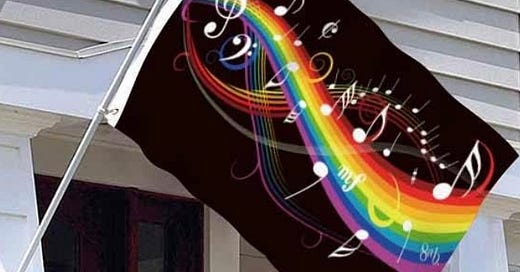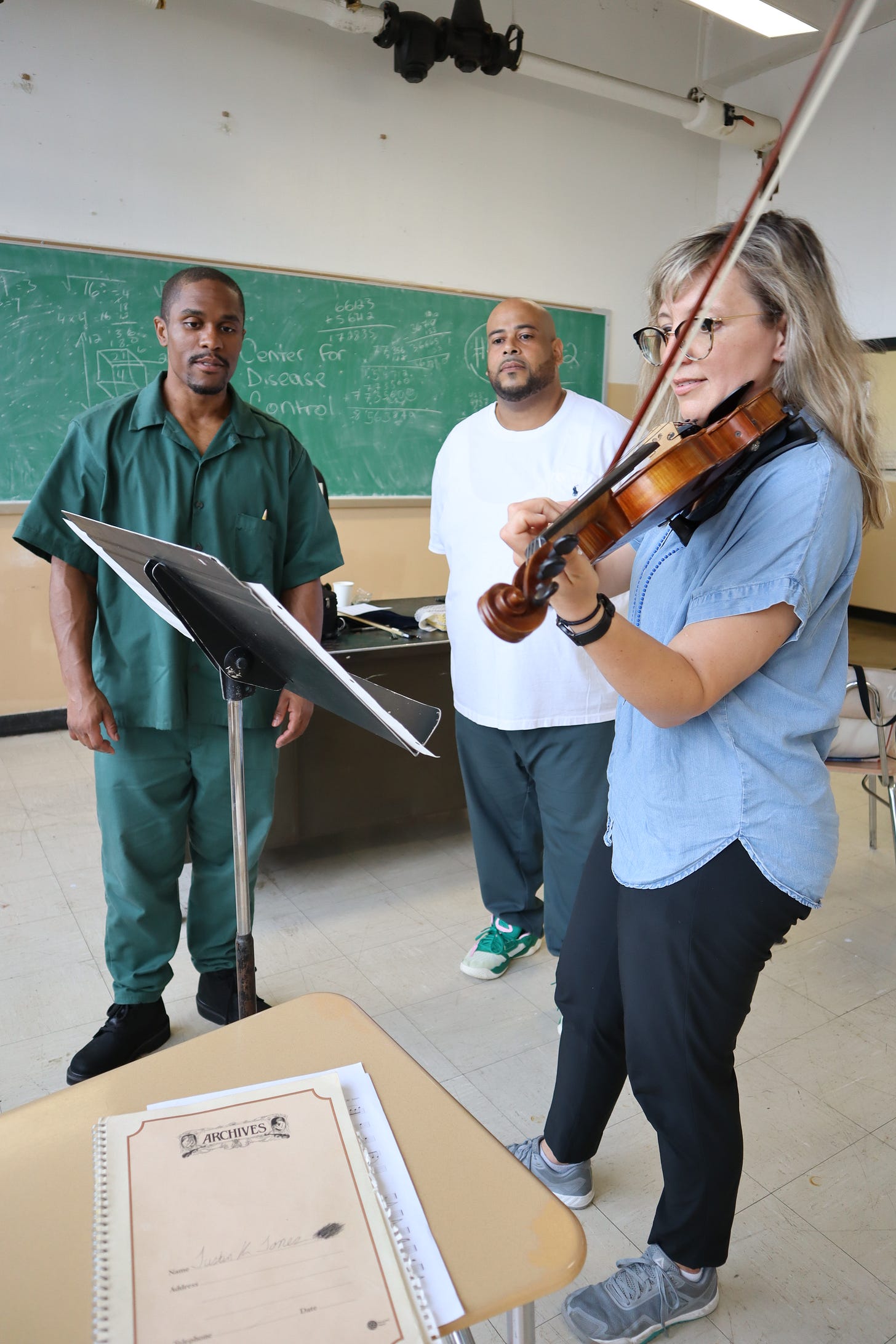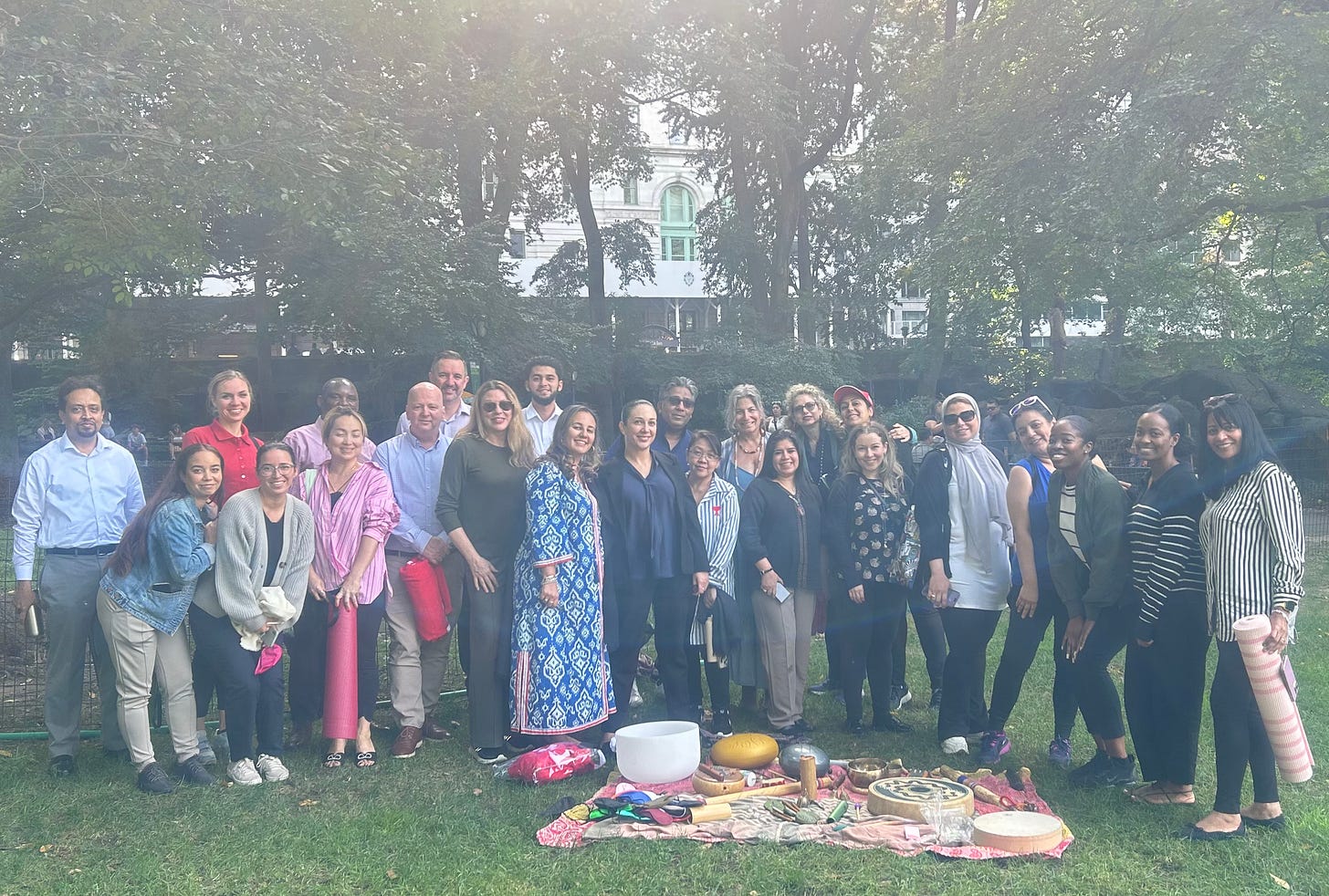“Every person, every animal, and everything has its song and its story.”
-Natalie Curtis
It is important to pay attention when people’s freedom of expression, including the playing of music, is taken from them. Don’t let us look away. Let’s stare straight at it.
In 1907, Natalie Curtis published The Indians Book, a heavy doorstop of a tome in which she allowed the indigenous people of the Southwest to share their songs and stories, the music they’d been forbidden to play by the government until Ms. Curtis beseeched a family friend, then-president Theodore Roosevelt, to allow her to allow it, and then traveled across the country by train and horse-drawn carriage to interview and record members of 18 different tribes so that it might be saved for posterity.
I came across Ms. Curtis and learned of her historic work with the native peoples of my home state of Arizona, which I’ve written about before, while reading a book about Alma Mahler-Werfel, whose visage I first encountered on the walls of the Leopold Museum in Vienna during a trip in March of last year.
I have shared the above photo often, in anger. Mrs. Mahler-Werfel was the sole woman featured on a large wall of Great Contributors to the intellectual heyday of Vienna in 1900 and—notably—the only person recognized for who she married, slept with and played muse to rather than for her own work, in her case, musical compositions of which “only a few survive.”
I was fairly incensed at the write-up, and at the story of Alma, whose very famous composer husband, Gustave Mahler, fairly forbade her from working on her own music in favor of caring for him and their children, typical for the time and something we still wrestle with in society.
When I turned to The Healing of Natalie Curtis about the fascinating musician/ethnomusicologist Alma had met along her path, I was again incensed, this time at how native peoples had been robbed of their culture and music. Ms. Curtis later worked to study, collect and popularize the music of African Americans.
All this ire about the denial of the freedom of expression came flooding back with stabbing visceral pain in my heart while in a meeting the the other day with a young woman in Bangladesh.
As we spoke about the violence that has been erupting in her country, in her neighborhood, from extremist religious groups set on restricting and eradicating other religious groups and their culture, she began to cry about what is happening to her beautiful, free and diverse country, and she shared through her tears how she is afraid to play music and to dance, how she is restricted in her clothing and manner when she leaves her home, which is rare, because it isn’t safe.
“Music, because soaring free in one’s heart and mind is a human right.”
This bright talented woman in Bangladesh helped me write that line for a grant we’re trying to get for Harmony, Inside and Out, a documentary project I am embarking on about Musicambia, the nonprofit whose beautiful work bringing music education into prisons is the most genuine heart-warming life-affirming initiative I have so far encountered in my (almost) 54 years. To give these men some moments of joyous soaring freedom while incarcerated is a great gift, not the least because so many of their stories are stories of freedoms denied in so many ways from their earliest memories.
Music, because soaring free in one’s heart and mind is a human right.
The line is as applicable to the world inside prison walls as it is to those of us outside of them. Music can set us free, and the right to it, denied, is a harbinger of very bad things.
A report back in 2022 by Mubashar Hasan and Geoffrey Macdonald for the U.S. Institute of Peace about the contemporary extremism in Bangladesh spoke of the dangers of “narrowed political space for dissent” and recommended as a combatant to that “social and political pluralism, tolerance and increased inter-religious dialogue across the region.”
Dialogue, yes. I started a podcast years back called Talking to Strangers, one of the many projects I’ve created to try in my own small way to forge dialogue with Other. I have (my friend Raed from Lebanon often reminds me) a fairly naive hopefulness that bringing people of disparate faiths, colors, genders and socioeconomic situations together through music and other other commonalities, rather than focusing on differences, might perhaps do some good.
Coincidently, the writer Malcolm Gladwell, far more famous than I, wrote a book called Talking to Strangers a bit after my podcast came out. He is far less hopeful in his outlook however, showing in his many examples how interactions with strangers so often go terribly tragically awry. Lovely. I interviewed Mr. Gladwell many years ago about his book Blink when I was a reporter for Advertising Age, something I reminded him of recently when he randomly sat down next to me at the Maker Hotel in Hudson, NY.
Mr. Gladwell didn’t recall our interview, and his disinterest was apparent. His misanthropic attitude made me shudder thinking how he has a platform, how he is helping form opinions in so many people’s minds about how incapable we are of connecting when actually I wholeheartedly believe the opposite is true.
If we can get out of our own selves, our own lives, our own challenges and ambitions, if we can try to find some empathy with other, try to understand that there is an underlying rhythm that we all share, then maybe there is hope.
How else do we come together in this world? Do we rely on our governments to do that? Clearly not. A recent NPR story, “From Gaza to Ukraine, Why Do So Many Modern Wars Last So Long?” spoke to the reality that “leaders waging wars often make very different calibrations than soldiers and civilians bearing the brunt of the conflict.” Right. Let’s not let our leaders on any “side” drive a wedge between us.
Though it might seem a tiny drop in the bucket to get people to come together through music, to push past the barriers and prejudices that blind us to one another’s humanity by finding a common rhythm, I nonetheless forge forward.
Yesterday, I went to my bimonthly visit to Camba’s Opportunity House Men’s Shelter to jam with the guys and offer a relaxing sound meditation. As usual, we gathered around, and this time I gained permission to record our collaborative improvisational compositions. The joy of bringing these gentlemen together to engage in fun unscripted unregulated rhythm is always super powerful. Maybe you’ll be able to hear how we shift and move together, synching up in spots in ways that feel in the moment something like heaven:)
Below is one jam a resident playing my ocean drum dubbed “Ocean Potion.” It features a variety of drums and percussion including seed shell and egg shakers, tambourine and my newest tongue drum, such soothing tones!!
And another random mix of drums and shakers and chimes that we laughingly called "Government-Funded Institution.”
Speaking of Government-Funded Institutions, on Saturday, God and Department of Corrections willing, I will go with filmmaker Dmitri Borysevicz and sound engineer Gabriel Cyr to Sing Sing Correctional Facility, where we will try our best to begin to document and record the beautiful freedom that Musicambia’s teaching artists give to the men inside through music.
Music, because soaring free in one’s heart and mind is a human right.
The weekend of October 11th, Carnegie Hall will sponsor a retreat at my house in the Catskills for alumni of its Musical Connections program in Sing Sing, also alumni of Musicambia, lovely men I’ve had the pleasure to get to know, who met inside Sing Sing. The three-night event (which we will document for our film) will feature a Sacred Bloom sound bath, music-making workshops led by Musical Connections’ teaching artist/bassist Leo Traversa, great food, ping pong, laughter and an epic hike. The retreat has been organized by The Jeptha Group, an offshoot nonprofit of Musicambia that brings music to the Seriously Mentally Ill inmates at Sing Sing, a group founder Jason Naradzay, an alumni of Musical Connections and Musicambia, calls “the forgotten of the forgotten.”
Read more about the Harmony, Inside and Out project on my revamped website, www.sacredbloomtribe.com. As Sacred Bloom Productions, I can house all of my impact storytelling content as well as information about my ongoing sound healing events and offerings. Check it out. Subscribe. Will launch a crowdfunding campaign shortly that I will surely tell you about:) Your support in offering freedom through music is greatly appreciated!!
Performing my own sound baths and attending live music are such healing things! Here is a sampling of some sound baths I’ve done and shows I’ve attended recently:
Sacred Bloom Corporate Sound Bath in Central Park!
Reach out if you want to bring me in to work with you and your colleagues to bring harmony to the office! This group was very relaxed and bonded by the experience…
E. 4th St. Community Garden Sound Bath with YogaSole
Reach out if there is a communal space you’d like me to come to and offer a sound meditation!! Was a beautiful neighborhood gathering…
Toombs Dixon Dance Party at The Local, Saugerties
GTO with Anat Cohen at Bar LunAtico, Brooklyn
Thanks for tuning in, for not looking away:) The power of sound and music to help us create peace within ourselves and with one another is rich and abundant and so very within our reach!! To ensure freedom of musical expression for all is a crucial endeavor, and I so appreciate your support.
Do link to my website www.sacredbloomtribe.com for upcoming sound bath opportunities and to peruse the various initiatives of Sacred Bloom Productions, past, present and future. So much blooming we have to do together…
In peace and harmony,
Steph








